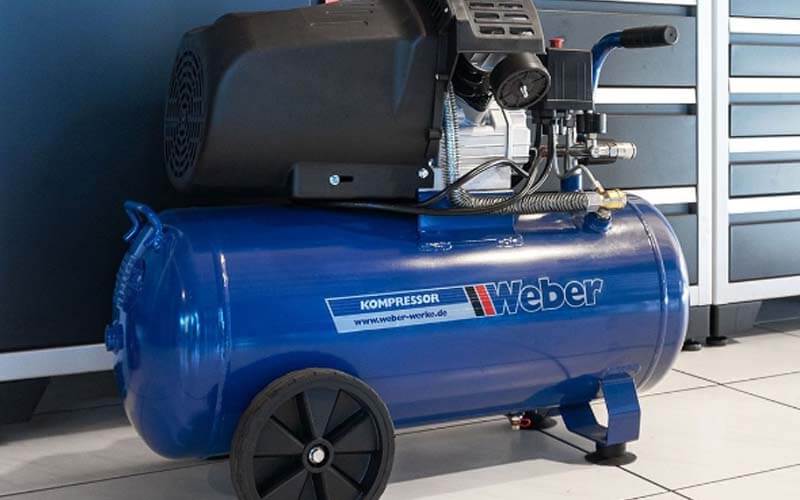Varied air compressors have different capacities, indicated by distinct values and ratings. Keeping track of the numerous meanings is not always simple. If you want to know what SCFM is on an air compressor, read the following article thoroughly to understand SCFM and its calculation process in detail.
What is SCFM?
The SCFM is the rate at which one minute’s worth of work compresses one standard cubic foot of gas or air at a specified temperature and pressure. This number is used as a benchmark to evaluate the compressor’s efficiency.
More air is produced by compressors with greater cubic feet per minute ratings, making them more suitable for more substantial tasks. The standard conditions for calculating SCFM flow rate are 60–68 degrees Fahrenheit, 14.7 psi of pressure, and 36% relative humidity of the air.
The “standard conditions” for SCFM
- There is a relative humidity of 36%, and the temperature is 68 degrees Fahrenheit (19 degrees Celsius)
- The air pressure is 14.7 PSIA (760 mmHg)
- 14.7 PSIA (760 mmHg) of pressure
Relation between SCFM and PSI
On the SCFM tables, there is a range of psi pressures (psi). Most of the time, the SCFM rating is written as 3.0 SCFM at 90 psi. If the pressure goes down, the SCFM rating will go up. As the pressure goes up, SCFM goes down even more.
Practical Example of SCFM
If, for instance, the work calls for 450 standard cubic feet per minute (SCFM) of airflow, but outside conditions significantly deviate from norms in terms of atmospheric pressure, humidity, or temperature, a 450 CFM air compressor might not be adequate.
Why is SCFM Important for Air Compressors?
When choosing a model or figuring out a proper installation, knowing how fast, free air flows through your compressor is essential. You can use the SCFM to make the most of this information.
When you know the SCFM of your air compressor, you can tell if you have enough gas compression for the size of the job you’ve given it. The SCFM can also advise you on the types and quantities of tools that are acceptable for usage. Your applications won’t perform as well as they might if your air compressor isn’t putting out enough air, and if it’s putting out more air than you need, you’ll waste money and resources.
Knowing the air compressor’s SCFM will allow you to confirm that it has the necessary pressure for your application. The compressor can provide 3–4 cfm at 90 PSI if it has ten horsepower or more.
How do you calculate SCFM?
SCFM Calculator:
- Determine the number of gallons that make up the air compressor’s tank
- Calculate the value by dividing 7.48 by the amount
- Turn off the air compressor to let out some pressure
- The air compressor needs to be refilled now. Also, check the gas gauge to determine the tank fill-up time
- At last, divide the result of subtracting PSI 1 from PSI 2 by 14.7
Air Compressor SCFM Chart: Tool Air Requirements
| Tool | PSI | SCFM |
| Pin Nailer | 60-100 | 1-2 |
| Stapler | 70-120 | 1-3 |
| Inflation Tool | 100 | 1.0 |
| Brad Nailer | 70-120 | 1-3 |
| Blow Gun | 100 | 2.5 |
| Finish Nailer | 70-120 | 2-3 |
| Framing Nailer | 70-120 | 4-5 |
| Ratchet Wrench | 60-100 | 4 |
| Spray Gun | 30-50 | 7-12 |
| Random Orbit Sander | 90 | 6-15 |
Understanding CMF
CMF (Cubic feet per minute) is used to gauge how much air your pneumatic tools receive from the air compressor. The variables in this measurement are temperature and pressure. CFM, or cubic feet per minute, is a volumetric flow rate indicator representing the volume of air flowing at a specific temperature and pressure. Air density varies with temperature and pressure, necessitating a more precise computation like the standard cubic feet per minute (SCFM).
Air Compressor CFM Chart: Pneumatic Tools Airflow Requirements
| Tool | CMF@90psi | L/sec@620Kpa |
| Framing Nailer | 2 | 0.9 |
| Drill 3/8″ | 6 | 2.8 |
| Blow Gun | 3 | 1.4 |
| Impact Wrench 1/2″ | 5 | 2.4 |
| Die Grinder | 5 | 2.4 |
| HVLP Paint Gun | 12 | 5.7 |
| Media Blaster | 23 | 10.9 |
What is the Difference Between SCFM and CFM?
The airflow rate of the compressor can be calculated using both standard cubic feet per minute and cubic feet per minute. While CFM gauges the “actual” airflow rate, SCFM calculates the number based on hypothetically optimal temperature and pressure conditions.
Whenever comparing CFM and SCFM ratings for the same compressor, CFM will always be lower because it is measured at a lower pressure (usually 90 psi) (PSI).
When calculating, you must factor in the typical temperature, humidity, and pressure because they impact a compressor’s SCFM rating. Since standard cubic feet per minute (SCFM) is a volumetric airflow measurement, the SCFM number for an air compressor will always be higher than the CFM value.
SCFM to CFM Chart (From 10-20 psi and 0-100°F)
| Temperature | CFM (20 psi) | CFM (18 psi) | CFM (16 psi) | CFM (14 psi) | CFM (12 psi) | CFM (10 psi) |
| 100 °F | 77.96 CFM | 86.62 CFM | 97.45 CFM | 111.37 CFM | 129.93 CFM | 155.91 CFM |
| 90°F | 76.56 CFM | 85.07 CFM | 95.70 CFM | 109.38 CFM | 127.61 CFM | 153.13 CFM |
| 80°F | 75.17 CFM | 83.52 CFM | 93.96 CFM | 107.39 CFM | 125.29 CFM | 150.34 CFM |
| 70°F | 73.78 CFM | 81.98 CFM | 92.22 CFM | 105.40 CFM | 122.96 CFM | 147.56 CFM |
| 60°F | 72.39 CFM | 80.43 CFM | 90.48 CFM | 103.41 CFM | 120.64 CFM | 144.77 CFM |
| 50°F | 70.99 CFM | 78.88 CFM | 88.74 CFM | 101.42 CFM | 118.32 CFM | 141.99 CFM |
| 40°F | 69.60 CFM | 77.33 CFM | 87.00 CFM | 99.43 CFM | 116.00 CFM | 139.20 CFM |
| 30°F | 68.21 CFM | 75.79 CFM | 85.26 CFM | 97.44 CFM | 113.68 CFM | 136.42 CFM |
| 20°F | 66.82 CFM | 74.24 CFM | 83.52 CFM | 95.45 CFM | 111.36 CFM | 133.63 CFM |
| 10°F | 65.42 CFM | 72.69 CFM | 81.78 CFM | 93.46 CFM | 109.04 CFM | 130.84 CFM |
| 0°F | 64.03 CFM | 71.14 CFM | 80.04 CFM | 91.47 CFM | 106.72 CFM | 128.06 CFM |
The Higher The SCFM, The Better?
The compressor feeds the pneumatic device air at one standard cubic foot per minute. Indicative of the compressor’s efficiency, this value is often quoted. However, higher cubic feet per minute (CFM) rated compressors produce more air and are better suited to more substantial tasks.

